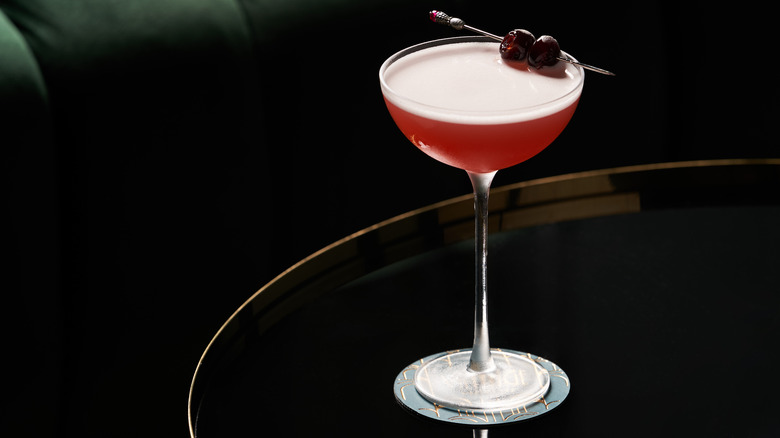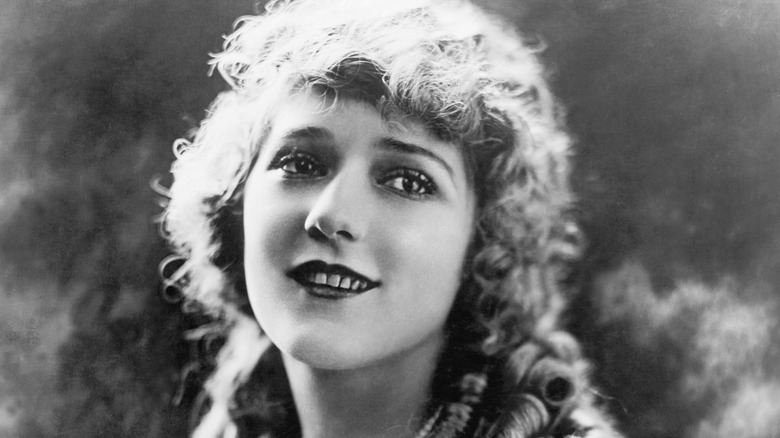The Cuban Cocktail Inspired By A Legendary Silent Film Actress
We may receive a commission on purchases made from links.
The Cuban cocktail named for actress Mary Pickford is just as sweet as she was, on account of the tropical pineapple juice and saccharine grenadine. Pickford's big eyes, bright face, and bouncy curls gave her a charming look, and fittingly, she was known as "America's sweetheart" during her heyday in Hollywood in the 1910s, '20s, and '30s. She starred in 194 black and white films, including "The Poor Little Rich Girl," "Tess of the Storm Country," and "Daddy-Long-Legs." She even won an Academy Award for her role in the movie "Coquette," worked as a screenwriter, produced films under her own company, and wrote an autobiography called "Sunshine and Shadow."
Invented in Cuba during that very same era, the Mary Pickford cocktail often includes about equal parts white rum and pineapple juice, though recipes will also play with the ratio of rum to juice to create boozier or fruitier versions. It also has a bit of grenadine (and its little-known flavor) and a few drops of maraschino liqueur — these ingredients lend a bright, fruit punch-like hue that almost makes you think you're ordering a Singapore sling cocktail. All the ingredients are shaken together and strained into a chilled stemmed glass, such as a coupe, for a libation that is fruity, sweet, and super easy to put together.
The legend behind the Mary Pickford cocktail isn't true
Everyone loves a good story and a famous face, so the idea that the cocktail was created while Mary Pickford was filming a movie in Havana, Cuba, with husband Douglas Fairbanks certainly makes for an attractive tale. The problem is that it's not true, according to research from Vanity Fair that found the former couple had never made a movie there. In fact, it seems that when the actress did visit the tropical island on other occasions, she didn't much enjoy the heat and humidity.
Regardless, the drink was still created in Cuba by either Fred Kaufman or Eddie Woelke, despite Pickford not actually being there at the time. The first official mentions of the cocktail were in "When It's Cocktail Time in Cuba" by Basil Woon, which was published in 1928, and "The Savoy Cocktail Book" written by Harry Craddock in 1930. The drink then grew in popularity across North America and Europe, around the same time that rum-based libations such as Ernest Hemingway's favorite cocktail — the daiquiri — and the El Presidente were invented and popularized in Cuba.


